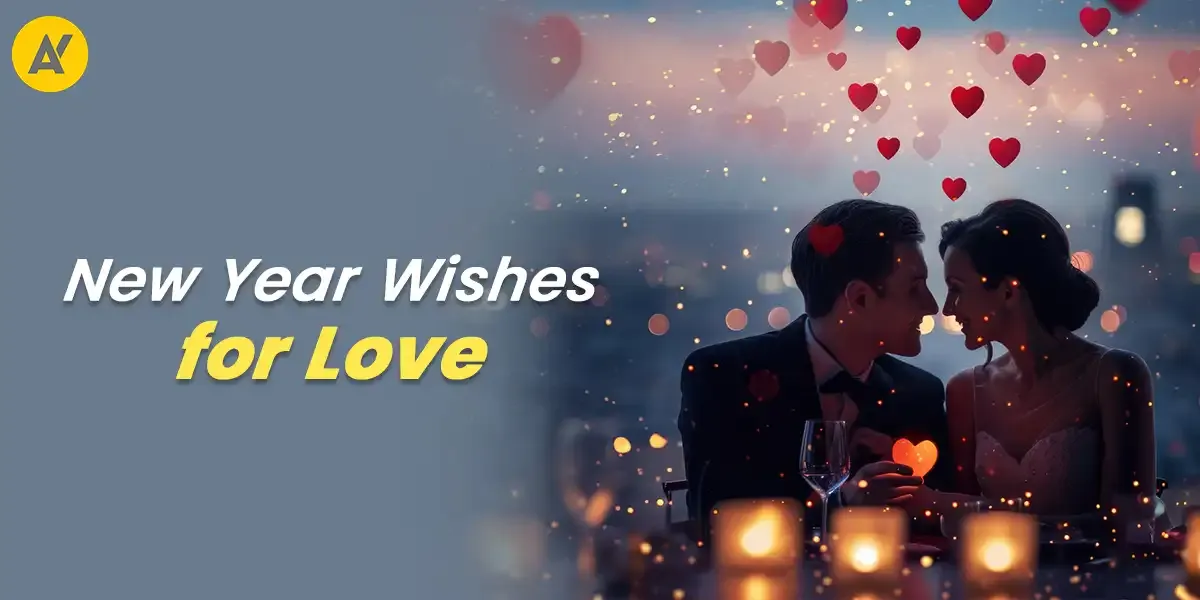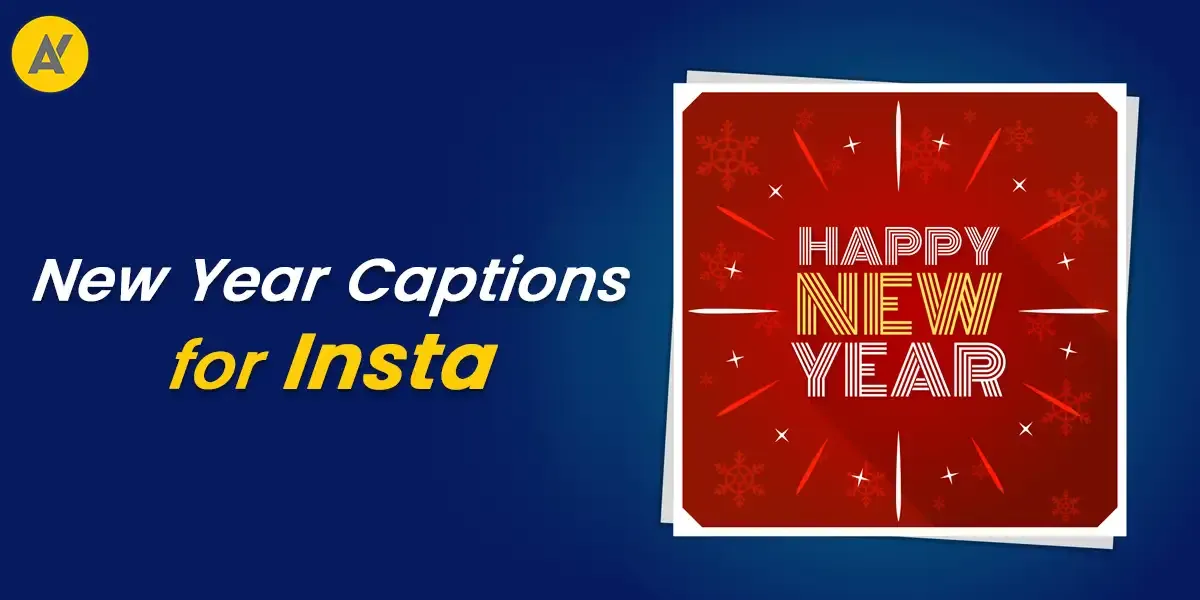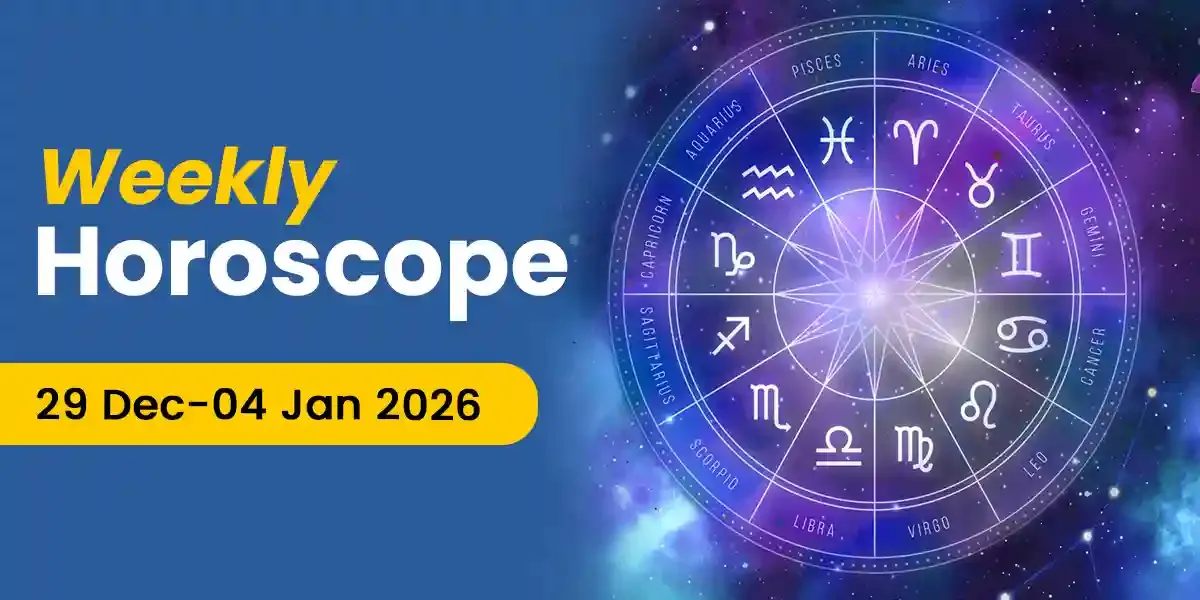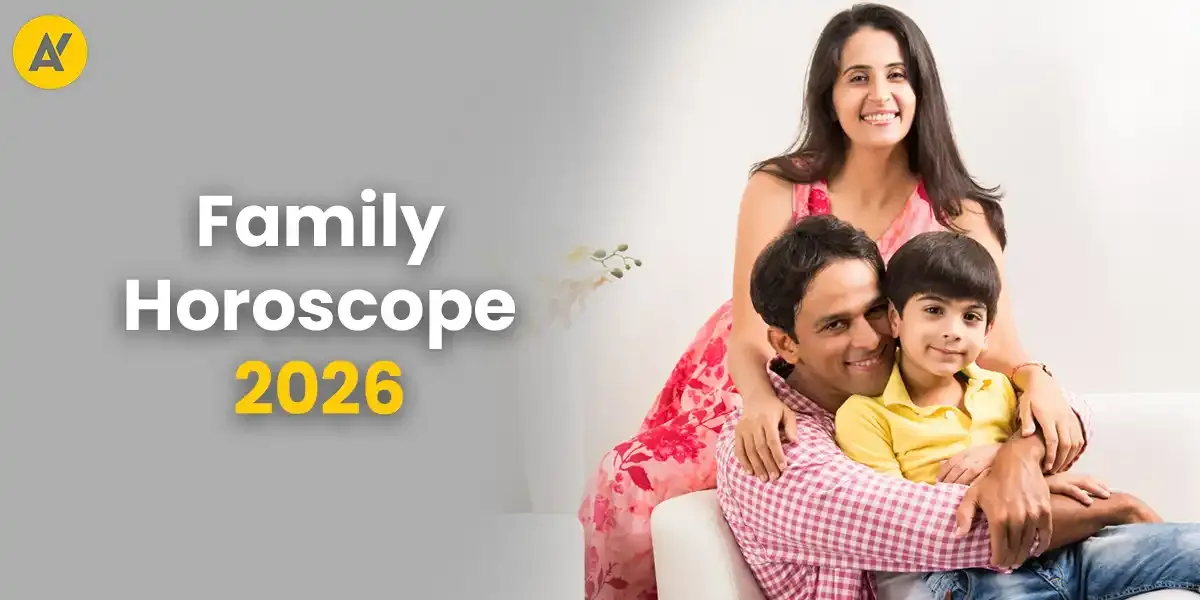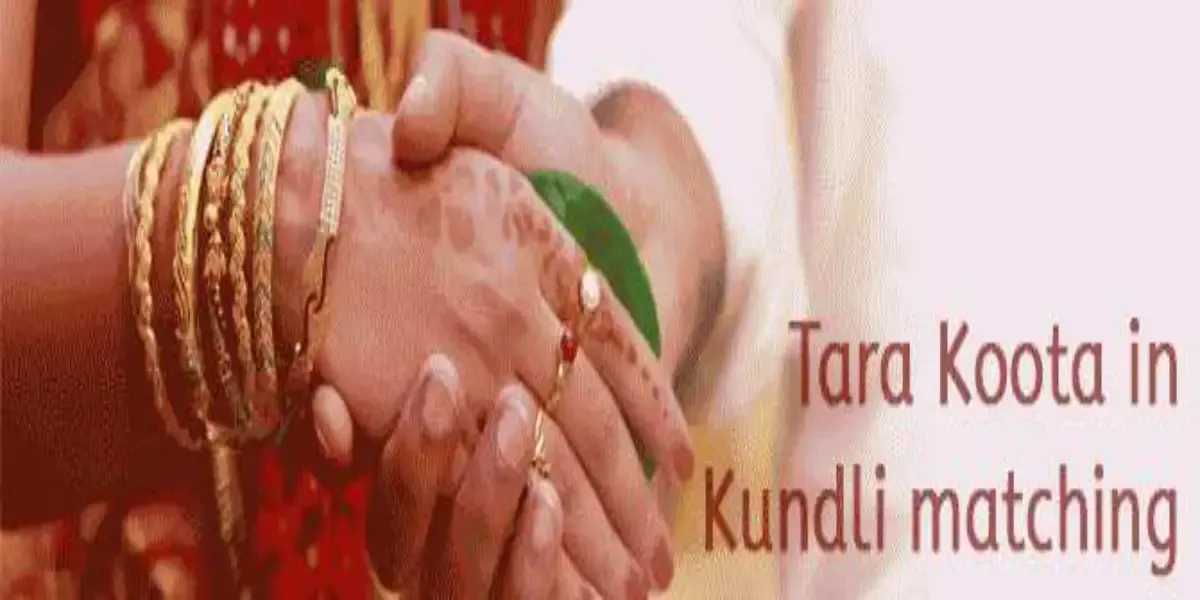
Tara Koota falls third in the Ashtakoota Milan system of Vedic Astrological match-making. ‘Tara’ means Birth Star, and Tara Koota is calculated to assess compatibility of the Birth Stars of the natives for Kundli Matching before marriage.
Tara Koota takes into account the Janam Nakshatras of the natives to analyse the health, and relationship compatibility and success of the partners after their marriage. There are 27 Nakshatras which Vedic Astrology divides into 9 categories of birth stars, namely-
Janama Tara, which is used to assess the longevity of the couple. It is considered to have a benefic effect.
Sampath Tara, to assess wealth and prosperity that the couple may gain. It is considered to have a benefic effect.
Vibath/ Vipat Tara, to assess the possibility of difficulties or problems the couple might face. It is considered to have a malefic effect.
Kshema/Chhem Tara, to assess prosperity.It is considered to have a benefic effect.
Prathiyak/ Pratiyari Tara, to assess possibility of obstacles the couple might be prone to. It is considered to have a malefic effect.
Sathaka Tara, to assess success.It is considered to have a benefic effect.
Vadhai/ Vadh Tara, to assess sufferings or any hardships the couple may be prone to. It is considered to have a malefic effect.
Maithra/Mitra Tara, to assess complementary nature of the natives.It is considered to have a benefic effect.
Parama Maithra/ Ati-Mitra Tara, to assess success of the compatibility of the natives. It is considered to have a benefic effect.
Tara Koota is calculated by counting the Nakshatra of the bride to the Nakshatra of the groom, and the remainder divided by 9 to get the answer-points. The maximum points for a category is 3.
If the remainder is an even number, then the matching is considered auspicious and 3 points are given, while if the remainder is an odd number, then the matching is considered inauspicious and 0 points are given. If only one remainder(either bride’s or groom’s) is even, then 1.5 points are given.
The points table is as follows-
| Tara of Bride | Tara of Groom | ||||||||
|---|---|---|---|---|---|---|---|---|---|
| 1 | 2 | 3 | 4 | 5 | 6 | 7 | 8 | 9 | |
| 1 | 3 | 3 | 1.5 | 3 | 1.5 | 3 | 1.5 | 3 | 3 |
| 2 | 3 | 3 | 1.5 | 3 | 1.5 | 3 | 1.5 | 3 | 3 |
| 3 | 1.5 | 1.5 | 0 | 1.5 | 0 | 1.5 | 0 | 1.5 | 1.5 |
| 4 | 3 | 3 | 1.5 | 3 | 1.5 | 3 | 1.5 | 3 | 3 |
| 5 | 1.5 | 1.5 | 0 | 1.5 | 0 | 1.5 | 0 | 1.5 | 1.5 |
| 6 | 3 | 3 | 1.5 | 3 | 1.5 | 3 | 1.5 | 3 | 3 |
| 7 | 1.5 | 1.5 | 0 | 1.5 | 0 | 1.5 | 0 | 1.5 | 1.5 |
| 8 | 3 | 3 | 1.5 | 3 | 1.5 | 3 | 1.5 | 3 | 3 |
| 9 | 3 | 3 | 1.5 | 3 | 1.5 | 3 | 1.5 | 3 | 3 |
Tara Koota matching is important to analyse the success and destiny of the marriage of the two natives. For a long lasting and trouble-free marriage, a good Tara Koota score is considered auspicious and is, thus, recommended. A bad Tara Koota score in Kundli Matching is considered inauspicious, and may give root to problems in the marital relationship.
Marriage is a very important step in life. So you should not take any chances.
Consult the best Vedic astrologers in India for online Kundli matching on Astroyogi.com.
Also Read:
Our in-house team of writers comprises of vibrant, like-minded, and curious souls who are passionate about helping people find joy and motivation through the magic of words. Our writers are keen on using their skills to make the study of divination sciences a guiding tool in people's lives. They hold expertise in writing on a myriad of topics related to Indian Astrology, Spirituality, Planetary Movements, Vastu Shastra, Numerology, and Tarot among several others. The Astroyogi team aims to write articles that can help the readers lead a life of peace and tranquility whilst enjoying the many ups and downs of life!


























